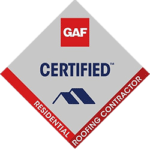10 Signs of Storm Damage Every Property Owner Should Know
Have you ever wondered why a few houses remain untouched after inclement weather? Most of the time it can be chalked up to good luck, while other times, the structural integrity and roofing material of the home play a significant role.
When a severe storm strikes, it can cause serious damage to your property. However, the damage can often go unnoticed, and place your property at higher risk when subsequent storms occur.
After a storm, you should conduct an inspection to evaluate the extent of the damage and have it repaired by a professional storm damage contractor. Spotting the signs of storm damage can help you resolve the issue and schedule repairs before it becomes more detrimental to your property.
What Is Storm Damage?
Storm damage is any kind of destruction that can occur to a property as a result of harsh weather conditions. According to CNBC, about 35 million homes in the U.S. are affected by inclement weather in a given year. The interior and exterior parts of your property can be impacted by these occurrences.
Types of Storm Damage
There are four different types of storm damage that can affect your property. These include:
- Water: Heavy rainfall can affect the interior and exterior of your property by impacting the walls, floors, roof, and plumbing.
- Ice: Heavy hail storms produce ice that can easily damage your roof and siding.
- Wind: Strong winds can damage your roof and shingles.
- Impact: Falling objects like falling trees or light poles can damage your property.
How to Know if Your Property Has Storm Damage
The roof and exterior walls of your property are the areas that are most susceptible to storm damage. However, in severe weather, the entire structural integrity of your home can be impacted.
When conducting an inspection of your property after a storm, here are the signs to look out for that likely indicate storm damage:
1. Missing Asphalt Shingles
Many homeowners choose asphalt shingles for their roofing system as asphalt is one of the most popular roofing materials. Professional contractors use nails to install and secure asphalt shingles.
Heavy storms can displace shingles by causing them to detach from the roof. If you’ve noticed a couple of missing shingles on your roof after a storm, then it’s likely your property has storm damage.
2. Dented Metal Flashing
The purpose of the metal flashing material on the roof is to direct stormwater away from the roof and prevent water leaks. During a heavy storm, impact from hail or debris may dent the flashing on your home’s exterior. It’s important to repair or replace this material right away to prevent your roof from leaking.
3. Broken Tiles or Cracked Concrete Shingles
Tiles and concrete shingles are the most durable roofing systems. However, during a heavy storm, impact from flying debris may cause cracks in your tile roofing or concrete shingles. Initially, the cracks may be difficult to notice, meaning a closer inspection will be required from an experienced home exterior contractor.
4. Leaking Roof or Ceiling
Every roofing system is installed with a waterproof material to protect the property’s interior. During a heavy storm, your roofing system can be compromised due to shifted ties or missing shingles. Any changes in the structural integrity of your roof can lead to water leakage.
It’s vital that you look for early signs of water leakage on your roof or ceiling. Whether you notice discoloration or brown ring-like patches, both can indicate your roof may have been damaged in a storm.
5. Dented or Chipped Siding
Dents, chips, or missing sections of the siding material are an indication of storm damage. Storms and heavy winds carry debris and when they land on your property’s exterior, the impact causes damage.
It’s important to update your siding to protect your house from harsh weather. The siding material serves three purposes:
- Protecting your property’s interior
- Insulation
- Enhancing curb appeal
6. Dampness on Interior Walls
During construction, contractors install waterproof material to create a barrier between the exterior and interior walls. The barrier protects the interior walls from water damage. However, during a storm, the roof or the sides may be exposed to leakage, causing the interior walls to soak in water.
7. Visible Growth of Mold or Mildew
Mold and mildew grow in damp, humid areas. When your interior walls are exposed to water after a storm, you’ll notice green, gray, or sometimes black residue on the walls. The residue is a sign of mold or mildew growth due to water seeping through the walls.
8. Chipped Paint on Exterior Walls
If your property has painted exterior walls, you may notice chipped or peeling paint after a storm. Damage to exterior paint is common after a hail storm or storms with heavy winds.
9. Damaged Window Frames
Professional contractors install strong window frames to support the panes during every kind of weather. Damaged window frames are a sign of wind damage. If you notice dents or chips on your window frame, it’s important to do a thorough inspection of the entire property to find other possible damaged areas.
10. Shattered Windows
Harsh hail storms are notorious for causing the most damage to a property’s exterior. Ice drops from the sky at a very high force and when it hits the window, it shatters. Shattered windows indicate heavy hail storms, and you should check the roof for additional damage.
Call A to Z Construction for Quality Storm Damage Repairs
Installing a proper roofing and storm drainage system can save your property from severe damage. Early storm repair is vital to saving your property from further damage. At A to Z Construction, we provide professional storm damage repair services in MN to help restore your property better than before. Contact us today to get a quote and to learn more about our services.










